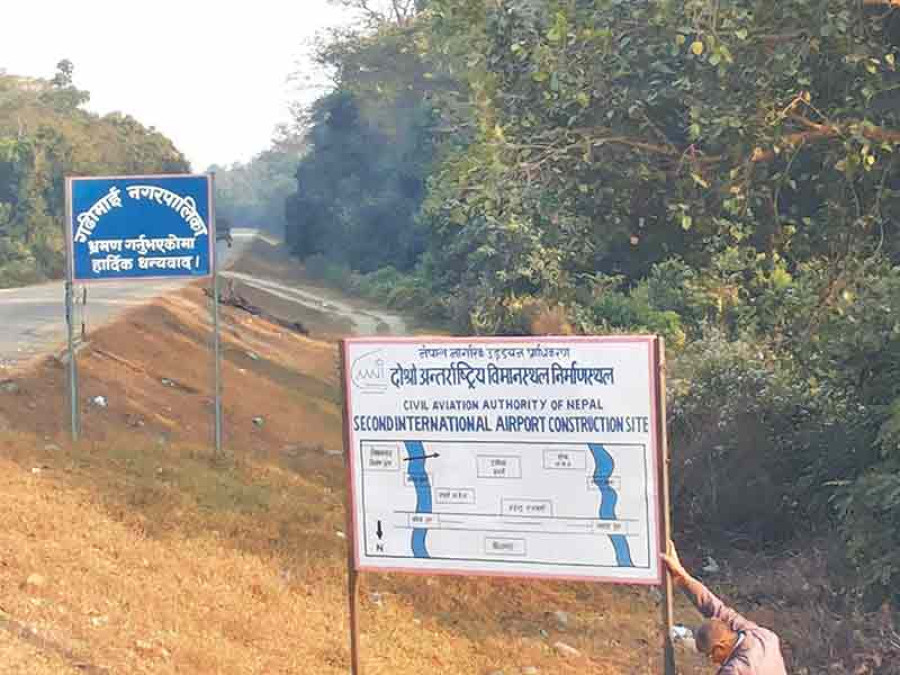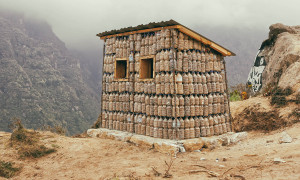Money
Too many cooks spoil Nijgadh airport broth
Four different government bodies have suggested three types of modalities to construct the country’s biggest airport in Nijgadh, Bara, sparking further confusion which threatens to delay the project that has been in the works for more than two decades.
Four different government bodies have suggested three types of modalities to construct the country’s biggest airport in Nijgadh, Bara, sparking further confusion which threatens to delay the project that has been in the works for more than two decades.
The airport scheme envisions building a modern airport in Nijgadh, 175 km from Kathmandu in the southern plains, as an alternative to congestion and winter fog at Tribhuvan International Airport (TIA), the country’s sole aerial gateway.
Tourism Ministry officials said that they had received contrasting advice about the construction modality, which is likely to stall the process if a concrete decision is not made by the new government.
In response to the ministry’s call for suggestions, the National Planning Commission (NPC) said it would be a good idea to build the airport under the engineering, procurement and construction (EPC) modality with government investment. After the construction of the airport is completed, it will be operated under a public-private partnership (PPP) model, bringing foreign or Nepali investors onboard.
“Both modalities should follow a competitive bidding process,” the NPC said. Under the EPC contract, a single contractor assumes the responsibility for all components like design, engineering, construction and procurement.
The contract binds the contractor to deliver the project at the stipulated time and at the predetermined price regardless of any possible cost
overruns.
Meanwhile, the Finance Ministry has advised the Tourism Ministry to adopt the engineering, procurement, construction and finance (EPCF) modality by involving government investment to build the new international airport. Under the EPCF model, the contracting firm makes all the arrangements including funding to build the project. The Finance Ministry has also asked the Tourism Ministry to keep the second option, the PPP model, open in case the first one does not work.
Likewise, a high-level panel comprising joint secretaries of the NPC and the Finance and Tourism ministries and the deputy director general of the Civil Aviation Authority of Nepal (Caan) has urged the government to construct the airport under the build own operate and transfer (Boot) model.
Boot is a public-private partnership model under which a private organisation conducts a large development project under contract to a public sector partner, such as a government agency. This model is often seen as a way to develop large public infrastructure projects with private funding.
The project construction modality preferred by the Tourism Ministry is similar to the one recommended by the NPC. The type of financial modality to be used to build the airport has been changing with every government. Successive administrations have put forward opposing plans that the airport should be developed through private or public financing.
“We still don’t have a concrete decision under which the project should be developed,” said Buddhi Sagar Lamichhane, joint secretary at the Tourism Ministry. “We will discuss the issue with the new government and proceed accordingly.”
Lamichhane said that it would be better if the decision about the modality was taken at the political level instead of asking for suggestions from different ministries and government agencies. “The Cabinet should decide which model is appropriate to build the new airport.”
Initially, Landmark Worldwide Company of Korea had prepared a detailed feasibility study of the project in 2011 which envisaged constructing the airport under the Boot model. It had estimated a price tag of Rs65 billion for the first phase. According to the Korean company’s feasibility study, the airport will be able to handle 15 million passengers annually and accommodate the Airbus A380 super jumbo after the first phase of construction.
Subsequently, Caan prepared a preliminary internal financial assessment of the project. Its report said that the project could be constructed at a cost of Rs121 billion, excluding the proposed airport city.




 8.12°C Kathmandu
8.12°C Kathmandu













